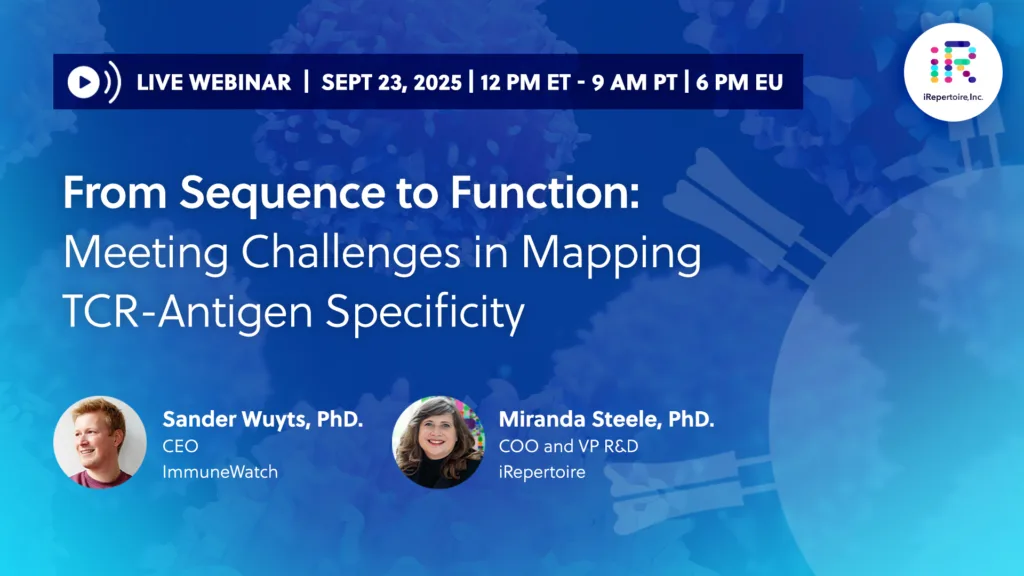
Abstract
Understanding the antigen specificity of T-cell receptors (TCRs) is one of immunology’s most complex challenges. The immense diversity of the TCR repertoire, coupled with the vast array of potential peptide-MHC (pMHC) ligands, makes mapping these interactions difficult with experimental methods alone.
This webinar will explore how advances in machine learning are helping decode TCR-pMHC recognition. Experts will discuss current strategies in predictive modeling, including algorithm design, data requirements, and validation approaches. Case studies will show how integrating experimental design with ML-driven annotation models is accelerating antigen discovery, improving vaccine and immunotherapy development, and enhancing our understanding of immune responses across disease areas.
Attendees will also learn how the ImmuneWatch DETECT platform can turn TCR sequencing data into actionable epitope insights—offering new solutions to a longstanding biological problem.
Highlights
-
Explore why TCR-antigen pairing remains a major bottleneck in immunology and immunotherapy.
-
Understand the current landscape of predictive modeling for TCR-pMHC interactions.
-
Learn how data quality, algorithm selection, and validation strategies impact performance.
-
See case studies where ML and experimental design accelerated antigen discovery.
-
Discover how ImmuneWatch DETECT turns TCRseq data into epitope-level insights.
Speaker Bio
Sander Wuyts, PhD – CEO ImmuneWatch
Dr. Sander Wuyts is the CEO and co-founder of ImmuneWatch, an immunoinformatics company specialising in T-cell receptor repertoire analysis. Their software ImmuneWatch DETECT is the leading solution for T-cell receptor specificity annotations, accelerating immunotherapy development.

Miranda Steele, PhD – COO and VP R&D iRepertoire
Dr. Miranda Steele leads operations and R&D at iRepertoire, co-developing key technologies like iPair and RepSeq+. She holds a PhD focused on X-ray protein structure and has authored patents in single-cell analysis, antigen-specific antibody detection, and multiplex amplification.
